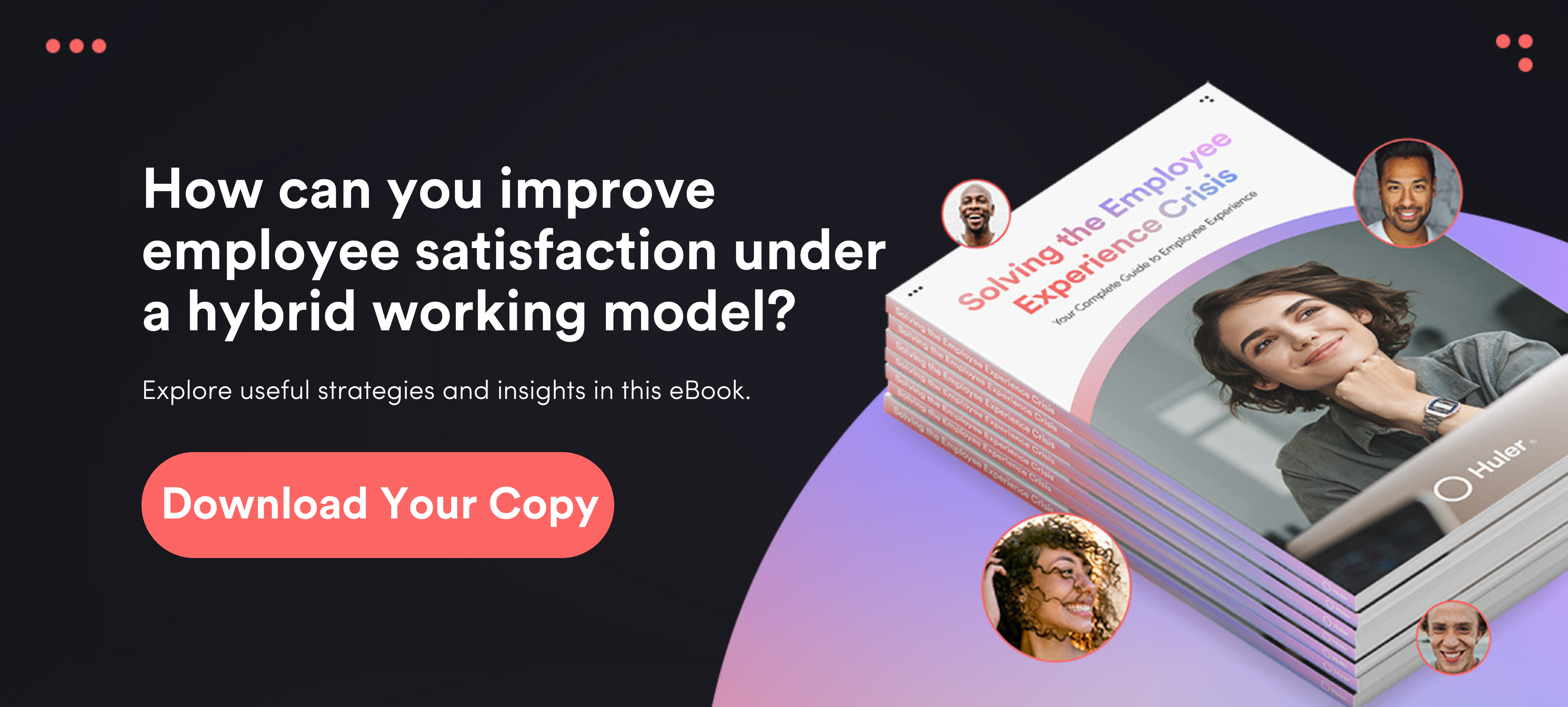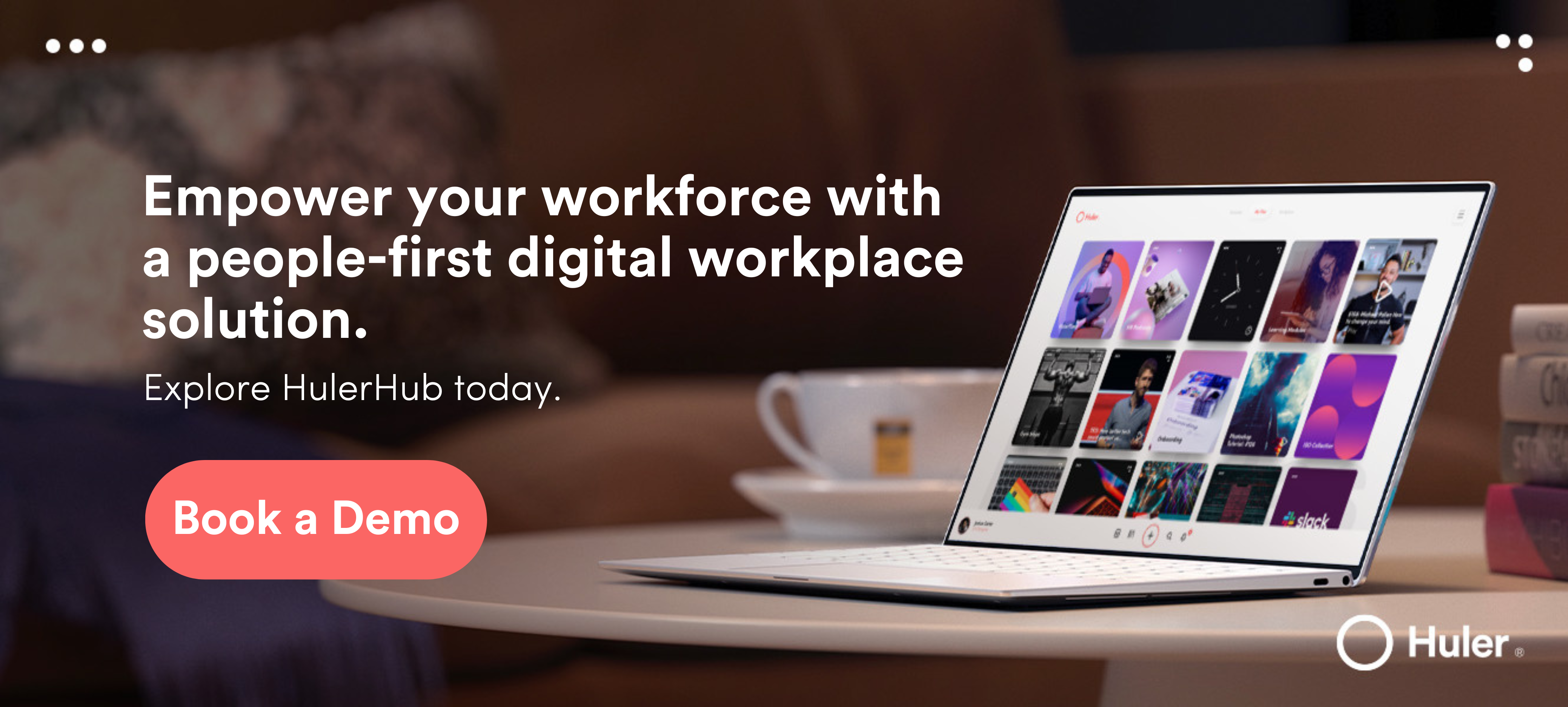Since 2020, office culture and working patterns have changed dramatically. For many UK professionals, full-time office attendance is now optional, with terms like ‘hybrid’ and ‘remote’ becoming commonplace. In fact, it is estimated that 75% of UK companies now offer some form of hybrid working to their employees. But what does that mean in practice?
‘Hybrid’ working is a term used in business to describe a way of working that combines both in-office days and work-from-home days. For some businesses, hybrid working might mean offering all employees two work-from-home days in a week. For others, it may mean one half of the workforce working from the office full time whilst the other half is fully remote.
Read on to learn more about what hybrid working is, how it compares to completely remote roles, and the different hybrid working models you can adopt in your business.
So, What is ‘Hybrid Working’?
Hybrid working is a flexible working arrangement in which employees can work both remotely and at their workplace. While some team members might prefer to do focused work in a dedicated office space, away from the cut and thrust of their home life, others might benefit from working remotely due to their health status, childcare arrangements, or simply because they feel more productive doing so!
For example, here at Huler, we operate on a hybrid work model where employees can choose whether to work remotely or at our offices.
Pre-2020, hybrid working arrangements were rare. However, following the major shift caused by COVID-19, organisations the world over are now offering a degree of flexibility in their own hybrid working models.
How Many Days At Home vs In-Office Counts as Hybrid Working?
Some organisations take a more structured approach to hybrid working, where employees choose one or two days a week for remote work. Alternatively, a workforce may be split between remote workers and on-site workers.
The beauty of creating your own hybrid working model is that it offers so many different combinations, with complete flexibility to chop and change depending on your employees and business goals. Not to mention the wide range of benefits of hybrid working too. We explore some of the hybrid working models in more detail later on in this blog.
Which Companies Are Going Hybrid?
Many businesses have adopted hybrid working models tailored to their needs. Here’s how some major companies are approaching the shift:
- Coinbase – Announced a remote-first policy in May 2020, allowing employees to work remotely by default while keeping offices open for those who prefer in-person work.
- Citigroup – Introduced three work models: Hybrid (three days in office, two remote), Resident (for roles requiring on-site presence), and Remote (for select roles). They also implemented Zoom-Free Fridays and Citi Reset Day to support employee well-being.
- Allen & Overy – Envisions offices as collaborative spaces rather than daily workstations, giving employees flexibility in choosing where to work.
- Google – Adopted a three-day office, two-day remote model, with added flexibility like work-from-anywhere weeks, focus hours, and reset days.
- HubSpot – Offers employees three options: @office, @flex, or @home, alongside support for remote workers, manager training, and a remote-first onboarding process.
Each company has tailored its hybrid policy to align with its values and culture, emphasising flexibility, employee well-being, and long-term sustainability of their hybrid policy.
Is Hybrid Better Than a Normal Working Schedule?
The hybrid work model empowers employees with choice. It asks them where and how they would like to work (while considering organisational requirements) and gives them the tools and resources they need to do so effectively. However, it might not work for every business. We explore the benefits and drawbacks of hybrid working below.
Hybrid Working Benefits
There is a reason so many professional companies now offer hybrid-working, and why many team members see it as non-negotiable when searching for roles. The benefits include, but are not limited to:
For the business:
- Decreased costs associated with renting & using an office space (often in expensive city-centre locations!)
- Attract and retain wider talent, which may live further afield
- Reduce employee turnover – In a May survey of 1,000 US adults, 39% reported that they would consider quitting their job if their employers aren’t flexible about remote work!
- Improved productivity from staff members working more efficiently from home
For team members:
- Freedom to choose when and where to work
- More efficient use of time, less in-office distractions
- Decreased costs associated with going to the office (commuting, public transport, buying lunch out etc)
- Team members utilising in-office time to collaborate more meaningfully
If you’d like to learn more about the benefits of offering both from-home and from-office working, check out our helpful blog: 5 Surprising Benefits Of Hybrid Working
Hybrid Working Negatives
Hybrid working isn’t going to be suited to every single business, so it’s important to consider your business and employee needs before implementing a new way of working. Here are some drawbacks you might want to consider:
For the business:
- May have to fork out for additional work equipment for home offices (monitors, office chairs, etc)
- Difficult to keep track of and maintain a good company culture
- Issues with communication and collaboration if team members are in different locations
- Cybersecurity and data risks as employees may use unsecured networks or even personal devices to access business information
For team members:
- Fewer social interactions with colleagues, making it hard to build relationships
- Remote workers may be overlooked when it comes to progression or pay opportunities
- Blurring of work-life balance if they don’t have a dedicated office/working space at home
The Different Types Of Hybrid Working Models
Because the hybrid work model is so flexible, there are many different variations. Which one an organisation runs with is dependent on the needs of the business, the preferences of staff, and (of course) day-to-day operational requirements. Find out more about the different ways of hybrid working below:
Remote-First For The Majority
Remote-first means working from home/elsewhere is the standard for most employees. While a remote-first organisation likely has a physical working space for those who need to be physically present, most of the workforce can either choose to work from home full time, or they can ‘work from anywhere’, without having set days in the office.
Remote-first for the majority is different from remote-first working. The biggest difference is that a remote-first workforce is exclusively remote with no (or very little) onsite capacity. Some organisations are even going as far as getting rid of their offices entirely as part of this strategy, with employees working from home or in co-working spaces full-time. If you have never had employees working from home before, we’d recommend still having a physical space available for those who wish to work hybridly.
If you’d like to learn more about implementing a ‘work from anywhere’ policy, and what it means in more detail, check out our helpful blog: What Does ‘Work From Anywhere’ Mean?
Set Occasional Office Days
Lots of organisations understand the value of having a physical space in which to collaborate and create – it’s great for meetings, appraisals, and much more. These companies are favouring what is called an ‘office occasional’ approach. This is where employees come into the office one or two days a week (or sometimes even just one or two days a month!) and work remotely for the rest of the time.
The difference between remote-first and office occasional days is that the former makes remote work the default, while the latter might be more prescriptive about when employees attend their workplace in person.
For example, a business may stipulate that all employees should work from the office on set days. Or, they might require employees to attend the office two days a week but employees can choose when to take them. Alternatively, the office may be reserved for collaborative and creative work, while focused work happens remotely.
Office First, Remote Allowed
In this model, the office is the default. It is the set-up that most of us experienced before the pandemic. While there might be some scope for workers to operate remotely, this is approved on a request basis that considers the employees’ job role, the goals of the business, and how the rest of their team is working.
There are some risks associated with this hybrid working model. Fully remote employees, who rarely – if ever – visit the office, may be overlooked for promotions or pay rises, left out of important conversations, or feel excluded from the workplace culture. This critical disconnect can lead to low engagement, productivity, and retention.
On the flip side, requiring pre-approval for every work-from-home day makes flexibility difficult for in-office employees, limiting their ability to adapt their work schedule to personal needs.
Which Hybrid Working Model Should You Choose?
Well, the short answer is: it depends on your current workplace culture, the job roles of your people, the infrastructure you already have in place, and the goals of your organisation – to name a few! While there are a huge number of benefits to hybrid working, without the proper controls and measures in place, it might not work in the way you imagine.
Organisations that embrace hybrid work have both physical workplaces and the infrastructure for employees to work effectively and productively from anywhere. By keeping an office space, you can trial the different hybrid working models mentioned above, and see which works best for you and your team.
If you want a step-by-step guide on setting up a hybrid working policy in your business, don’t forget to check out our helpful blog: How To Implement a Hybrid Working Policy
Hybrid Working Solutions From Huler – Book Your Software Demo
Here at Huler, we think hybrid working and working from anywhere is the future. We already know that it’s what the majority of employees want. So, businesses can either spend all their time and energy fighting against it and wrangling people back to on-site locations against their will, or they can invest in policies, technology, and training that will support productive work in a hybrid setting.
If you’re not sure where to start – don’t worry. We’ve got your back. Our hybrid working solutions are created specifically to engage and empower your hybrid and distributed workforces, alongside kickstarting effective digital transformation in your business.
Sounds good? Check out HulerHub, our pioneering hybrid working platform and book a demo. Alternatively, contact us to find out more about what we do, how we do it and what we can do for you!








